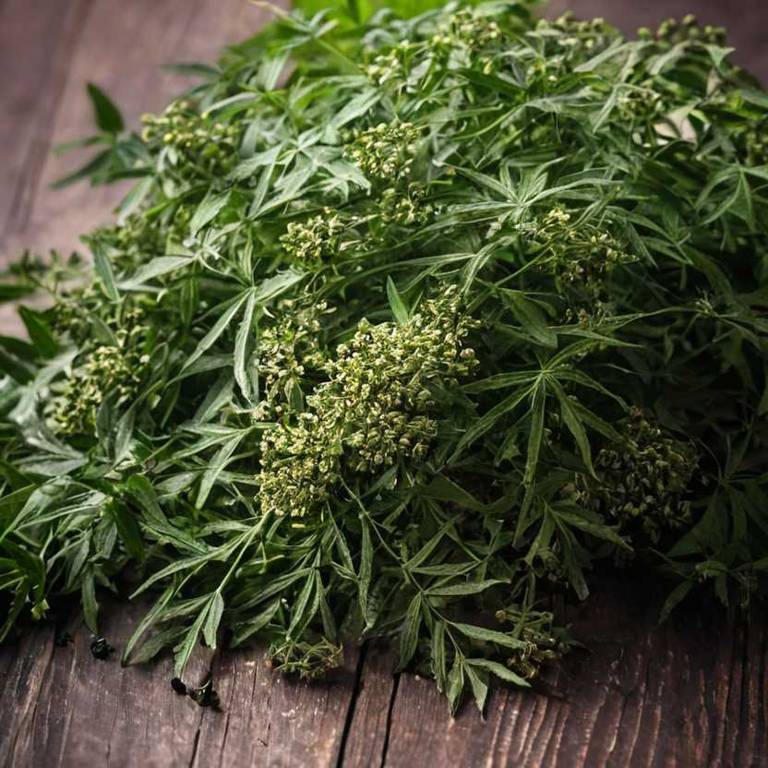European Elderberry (Sambucus Nigra)
Information Reliability Score: 5/10
This score reflects the overall reliability of the information presented in this article. It is based on the quality of scientific evidence, accuracy of sources, and the transparency of references related to Sambucus nigra.

European Elderberry, scientifically known as Sambucus nigra, is a medicinal herb widely recognized for its adaptogenic properties and use as a spice.
It is rich in antioxidants, particularly anthocyanins, which contribute to its vibrant purple color and offer immune-boosting benefits. Traditionally, it has been used in European cultures for centuries to treat colds, flu, and respiratory ailments, often in the form of syrups or teas. In modern wellness practices, it is popular as a natural supplement to support immune function and reduce inflammation.
Its distinctive tart-sweet flavor and unique compound called elderberry lectin make it a valuable ingredient in both traditional remedies and contemporary health products.
FREE CHECKLIST
The Only 10 Herbs You Need to Heal 90% of Common Ailments.

Table of Contents
Scientific and Botanical Profile
European Elderberry, with botanical name Sambucus nigra, is a shrub or small tree belonging to the family Caprifoliaceae.
It is commonly known as Black Elderberry, Common Elderberry, and European Elderberry, and is native to regions across Europe, Asia, North Africa, Southwest Asia, the Middle East, Central Asia, Northern Africa, Southern Europe, Eastern Europe, and Western Asia. The plant typically grows to a height of 3-10 meters, featuring compound leaves with five to nine leaflets that are ovate to lanceolate in shape. Its flowers are clustered in umbels, producing small, fragrant, white or greenish-white blooms, while the fruit is a dark purple to black berry that ripens in late summer.
This species is well-known for its medicinal and culinary uses, with the berries being rich in antioxidants and used in jams, wines, and herbal remedies.
History and Cultural Relevance
European Elderberry was used by ancient civilizations such as the Greeks, Romans, and Celts for its medicinal and symbolic properties, with references dating back to Hippocrates and Pliny the Elder.
In traditional medicine systems, it was valued for its antiviral, anti-inflammatory, and immune-boosting properties, often employed to treat respiratory ailments, fevers, and skin conditions. Culturally, elderberries played a significant role in folklore, with rituals involving their harvest and use in seasonal festivals, such as the celebration of the "Elder Tree" in European traditions. They were also associated with protection, transformation, and the cycles of life and death, often used in herbal potions and charms.
Today, elderberry remains a popular remedy, with elderberry syrup being widely used to support immune health, especially during cold and flu season.
Chemical Composition and Nutritional Profile
European Elderberry contains a rich array of bioactive compounds, including flavonoids such as quercetin and rutin, as well as anthocyanins, which contribute to its vibrant color and antioxidant properties.
It also contains essential oils, terpenes, and small amounts of alkaloids, which may support its traditional use in herbal medicine. Nutritional-wise, elderberries are a good source of vitamins C and A, along with B-complex vitamins, and minerals like iron and manganese. The high concentration of antioxidants and anti-inflammatory compounds helps support immune function by neutralizing free radicals and modulating inflammatory responses.
These compounds work synergistically in the body to enhance immune defenses and may help reduce the severity and duration of viral infections.
Medicinal Properties and Health Benefits
Sambucus nigra has long been recognized for its diverse medicinal properties and health benefits, particularly in supporting the immune system, respiratory health, and cardiovascular function.
Its berries and flowers contain compounds like flavonoids, anthocyanins, and mucilage, which exhibit anti-inflammatory, antiviral, and antioxidant effects, making it beneficial for the respiratory and immune systems. Compared to similar herbs like echinacea or elderberry, sambucus nigra offers a broader spectrum of bioactive compounds, with its mucilage content providing a gentler, more sustained effect on the digestive system. It is also noted for its ability to support liver function and may help in reducing cholesterol levels, offering unique advantages over other herbs with more narrow therapeutic applications.
While elderberry is often used for cold and flu symptoms, sambucus nigra's additional benefits for the cardiovascular and digestive systems make it a more versatile choice in traditional and modern herbal medicine.
Discover the 10 best health benefits of European Elderberry.
Forms, Preparation and Usage
Sambucus nigra has a variety of forms available, including fresh berries, dried berries, tinctures, powders, essential oils, and capsules, each offering different methods of preparation and usage.
It can be prepared as a tea by steeping dried berries in hot water, or as a decoction by boiling the berries for a longer period to extract more active compounds. A topical application of the plant is also possible, such as using a diluted essential oil for skin conditions or a poultice made from crushed berries. For adults, a typical dosage is 1 to 2 cups of tea per day, while children may take a smaller dose if deemed safe by a healthcare professional.
Due to the potential for toxicity, especially with raw berries, it is recommended to use sambucus nigra with caution, and treatment should be short-term and under professional guidance.
Safety, Side Effects and Contraindications
Sambucus nigra can be used as a medicinal plant for its potential immune-boosting and anti-inflammatory properties, but it requires careful consideration due to its safety profile.
While generally considered safe when used in moderate amounts and for short periods, it may cause side effects such as gastrointestinal upset, nausea, and vomiting in some individuals. It is important to note that sambucus nigra may interact with certain medications, including anticoagulants and diabetes treatments, potentially increasing the risk of bleeding or hypoglycemia. Special populations, such as pregnant or breastfeeding women, should avoid using sambucus nigra due to the risk of adverse effects on the fetus or infant, as well as individuals with chronic illnesses like diabetes or autoimmune disorders.
To ensure safe use, it is advisable to consult a healthcare provider before use, start with low doses, and discontinue use if any adverse reactions occur.
Growing, Harvesting and Storage
Sambucus nigra grows in a variety of soil types, preferring well-drained, loamy soil with a slightly acidic to neutral pH, and thrives in full sun to partial shade.
It requires regular watering during its establishment phase but becomes drought-tolerant once mature, though it benefits from consistent moisture during the growing season. For optimal growth, it should be planted in early spring or fall, with proper spacing to allow for its spreading habit. Regular pruning in late winter or early spring encourages bushier growth and enhances fruit production, while mulching helps retain soil moisture and suppress weeds.
The berries are best harvested in late summer to early autumn when they turn dark purple, using hand-picking or gentle shaking of the branches to avoid damaging the plant, and should be dried in a cool, dark, well-ventilated area or freeze-dried to preserve their medicinal potency, then stored in airtight containers in a cool, dry place to maintain their efficacy.